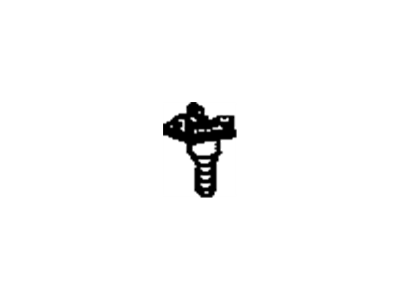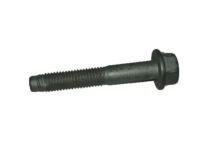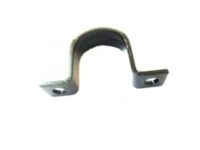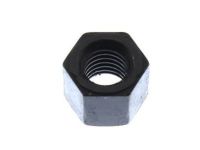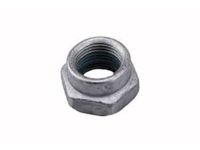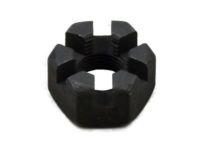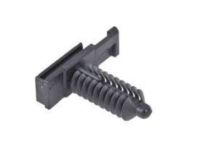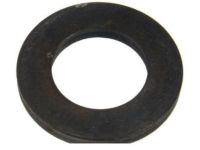To inspect and replace balljoints in the front suspension, follow these steps. If a balljoint is separated from the steering knuckle, check for looseness by trying to turn the ballstud with your fingers. If it's loose, replace the balljoint. Alternatively, to check with the suspension assembled, raise the front of the vehicle on jackstands, support it securely, and remove the wheel. Place jack stands under the lower control arms close to each balljoint and ensure stability. For lower balljoints on 2WD models, inspect the seal for damage. On 2WD models, there's a visual wear indicator that indicates replacement if the shoulder at the base of the grease nipple is flush with or inside the lower cover surface. To check lower balljoints on 4WD models, use a dial indicator and prybar. For upper balljoints on both 2WD and 4WD models, use a dial indicator against the wheel rim and rock the tire to check deflection. To replace the upper balljoint on 2WD models, raise the vehicle, remove the wheel, caliper, ABS wheel speed sensor, and wiring from the upper control arm. Remove the cotter pin and back off the nut, then use a special tool or balljoint separator to separate the balljoint from the steering knuckle. For upper balljoint replacement, drill out the rivets, clean the control arm, and install the new balljoint using nuts and bolts from the kit. For lower balljoint replacement on 2WD models, remove the lower control arm and have the balljoint pressed out and the new one pressed in at an automotive machine shop. Inspect the steering knuckle's tapered holes and replace if damaged. Reconnect the balljoints and tighten the nuts. For 4WD models, the procedure is similar to 2WD models, but a pickle fork-type separator is often needed. To replace the lower balljoint on 4WD models, raise and support the vehicle, remove the wheel and splash shield, disconnect the tie-rod, remove the driveaxle, drill and remove rivets, use a puller to separate the balljoint from the knuckle, then install the new balljoint to the control arm and reassemble. Load the torsion bar, install the driveaxle, connect the tie-rod, reinstall the splash shield and wheel, and lower the vehicle. Finally, tighten the lug nuts to the proper torque specifications.
Posted by GMPartsGiant Specialist 
